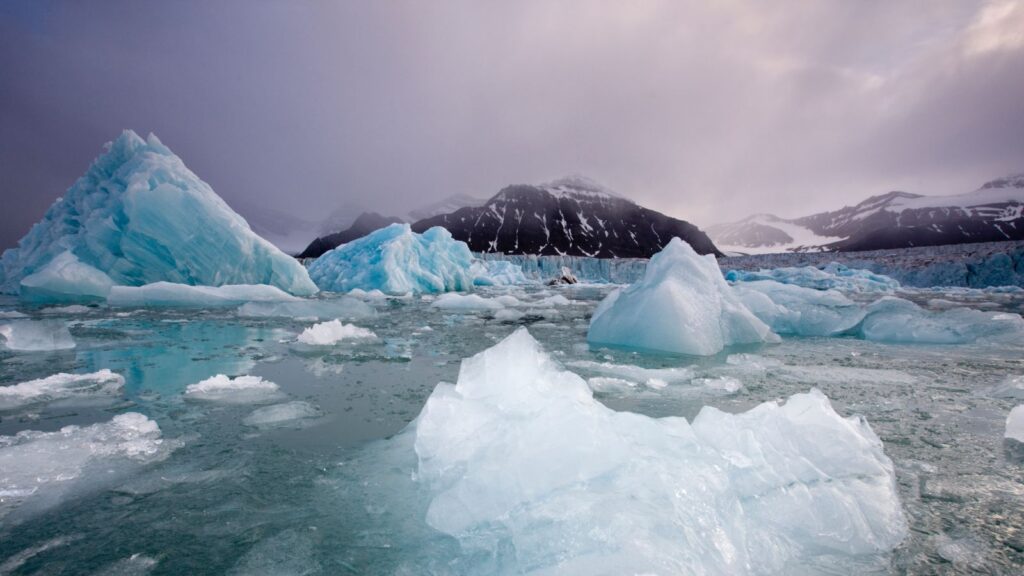The Arctic Ocean was once an important source of greenhouse gases to the atmosphere, and researchers warn it could do so again.
Methane (CH4) is second only to carbon dioxide (CO2) in trapping heat in Earth’s atmosphere. Since 2020, human greenhouse gas emissions have increased atmospheric methane by about 10 parts per billion per year, more than twice as much as CO2. But scientists still don’t know how the methane cycle will react as the planet warms.
The researchers focused on a period of rapid warming and ocean acidification that occurred about 56 million years ago, known as the Paleocene-Eocene Thermal Maximum (PETM). PETM is one of the best examples of major climate change caused by disruption of the Earth’s carbon cycle, similar to the global warming we are experiencing today.
Scientists have previously shown that PETM was accompanied by widespread releases of CO2 and CH4 into the ocean and atmosphere, leaving distinct geochemical signatures in the sedimentary rocks of the time. But despite 30 years of research, scientists have not been able to pinpoint exactly where these gases come from.
To find out how the carbon cycle worked during PETM, researchers involved in this new study examined 50 feet (15 meters) of marine sediment cores drilled from the central Arctic Ocean by the Integrated Ocean Drilling Program’s Arctic Coring Expedition. The deposits date back 66 million years and preserve the PETM warming event and subsequent “recovery” period during which the climate eventually stabilized.
The researchers extracted organic molecules from the sediment and measured different forms of carbon within them. They identified organic molecules, known as biomarkers, to determine what types of microorganisms were living on the ocean floor when the sediment was deposited. They used forms of carbon known as isotopes to determine what the microbes were eating.
Generally, methane has lighter carbon isotopes than CO2. In other words, methane-eating microorganisms produce biomarkers with characteristically lighter carbon isotopes. The researchers tracked these biomarkers in core samples and discovered that the main methane-eating organisms in the Arctic Ocean changed during PETM.
Before the development of PETM, methane was formed deep on the ocean floor and consumed by microorganisms that breathe sulfate instead of oxygen through a process known as anaerobic oxidation of methane (AOM). However, during PETM, biomarkers from AOM microorganisms decreased.
Due to the abundance of sulfates in modern oceans, AOM consumes a large portion of the methane in marine sediments. However, scientists believe that sulfate concentrations are much lower during PETM, meaning that the amount of methane available to these microorganisms is limited. The researchers wrote in a research paper that this suggests that the large amounts of methane burps in PETM may have “overwhelmed the sedimentary AOM biofilter” and released methane into the seawater.
Once the methane reached the water column, biomarkers showed that another set of microbes took over. These microorganisms consume methane while breathing oxygen through a process known as aerobic oxidation of methane (AeOM).
The researchers propose that this switch may have turned the Arctic into an important source of CO2 after the onset of PETM warming. The researchers explained that AOM in the sediments produces the alkaline compound bicarbonate, which helps buffer the ocean and stabilize pH. However, AeOM in the water column releases CO2, contributing to global warming and ocean acidification. Since AeOM microorganisms also consume O2, other oxygen-intolerant microorganisms spread out and eat up the sulfate, further starving the AOM microorganisms.
Could a similar Arctic methane switch accelerate today’s climate change? “We think it’s possible and very likely,” said study lead author Bam-Soo Kim, an organic geochemist at NASA’s Johnson Space Center. Kim, who was a researcher at Texas A&M University at the time of the study, told Live Science in an email that the Arctic Ocean will become warmer and fresher, consuming more oxygen and causing similar changes in the methane cycle.
But other scientists are less certain. “The factors that made the Arctic a carbon source in the past may not be directly similar in the future. The Arctic Ocean is physically more restricted from the world’s oceans, and its ocean chemistry was different in important ways,” said Sandra Kirtland Turner, associate professor of paleoclimate and paleoceanography at the University of California, Riverside, who was not involved in the study.
Kirtland-Turner also emphasized that the results are a reminder that carbon cycle feedbacks can amplify or prolong warming. “Currently, carbon cycle feedbacks are poorly constrained and little consideration is given beyond 2100,” which limits our understanding of their full impact, she told Live Science.
Source link

